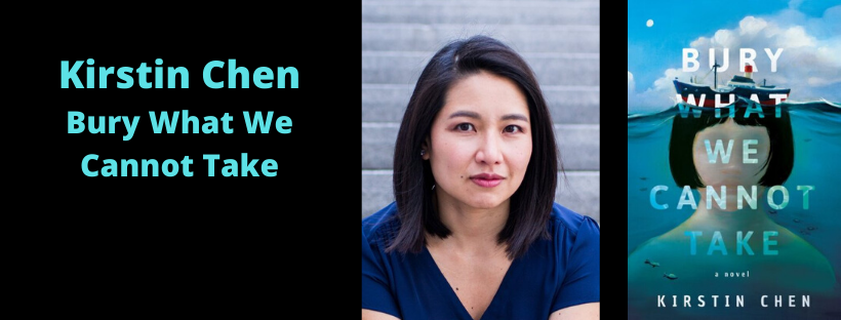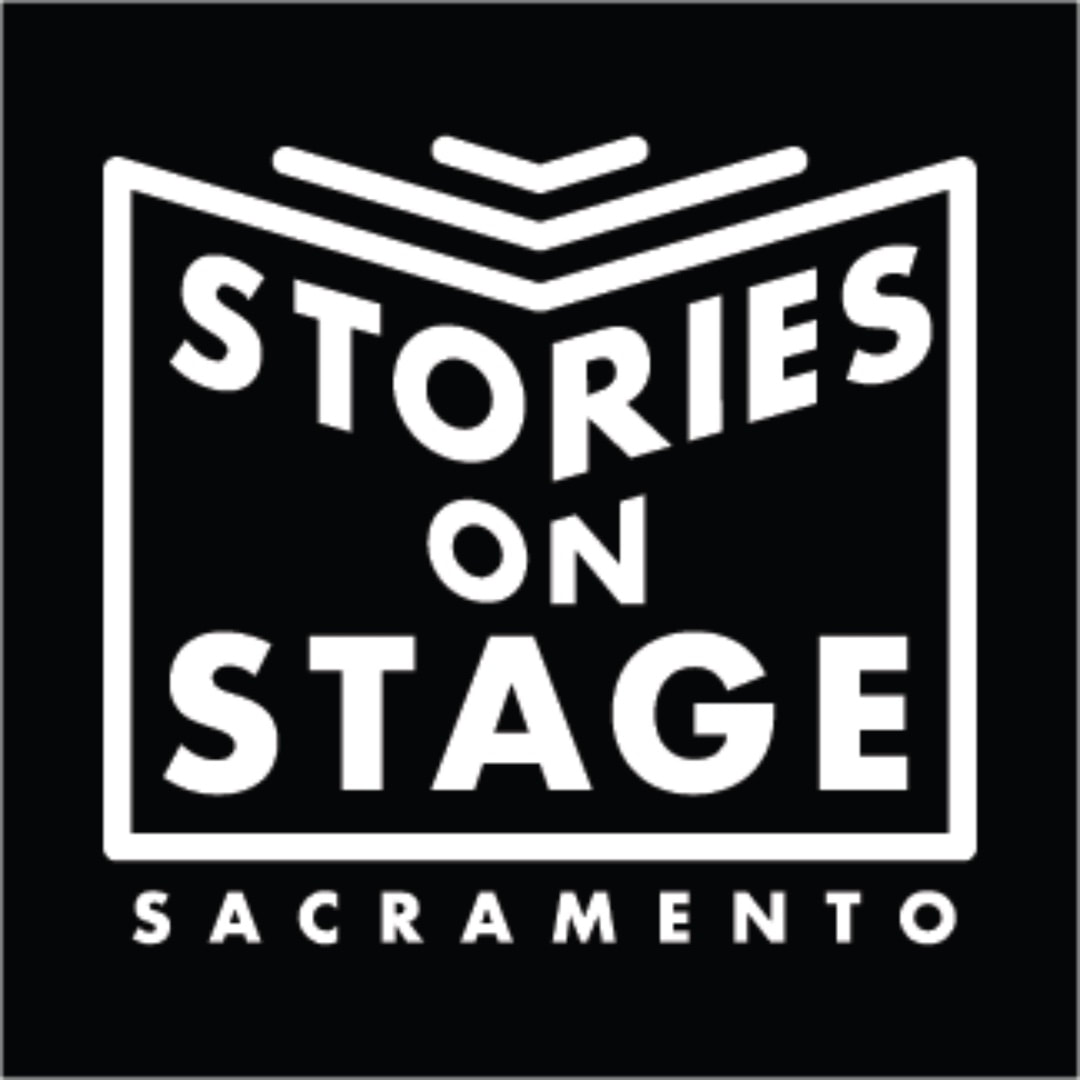 Author Kirstin Chen's Bury What We Cannot Take is a story that eerily echoes today’s headlines: the tale of a family torn apart by the policies of a brutal government. Only it’s the 1950s, on mainland China, in the early days of the Maoist regime. Kirstin Chen‘s novel begins in a once-opulent villa on a tiny island in Southern China in 1957, with brother and sister Ah Liam and San San witnessing their grandmother taking a hammer to a portrait of Chairman Mao. When the authorities learn of this, the family must flee to Hong Kong, but when they attempt to get the necessary permits, they’re forced to leave one child behind as proof that they’ll return. Chen’s novel, partially based on the experiences of her own family, explores how we rationalize impossible decisions, persist in the aftermath of agonizing loss, and probe the limits of familial love. Thanks to Chen’s publisher, Little A, for the interview excerpted here. Q: What inspired you to write a novel set during this era? A: From the start, my focus was on a single family and their particular struggles, and I feared that if I were to set the story during a more “well-known” time period such as the Great Leap Forward, or the Cultural Revolution, the history would overpower or otherwise take away from the personal. Additionally because 1957 was relatively early in Mao’s reign, it struck me as a period of great optimism and hope. People really wanted to believe in the new government and its ideologies, and that’s something that’s reflected in the book. The story is told from multiple perspectives: first of all, San San, who is only nine years old when the rest of her family flees to Hong Kong and leaves her behind on Drum Wave Islet, as well as her 12-year-old brother, Ah Liam, and their parents and Bury What We Cannot Takegrandmother. Incorporating each family member’s perspective was important to me because each of them is complicit in San San’s abandonment, and each must come to terms with the sacrifices he’s willing to make to reunite the family. The multiple perspectives allowed me to delve into each character’s guilt and sadness and rage, as well as into his innermost thoughts—the secret ways in which he justifies his actions in order to keep going. Q. How did you research the novel? What made it particularly challenging? A. I read a lot of historical fiction, some of it set in China, around the same time period as my novel, like Yu Hua’s To Live and Eileen Chang’s Naked Earth, and some of it set in completely different parts of the world, like Edward P. Jones’s The Known World and Michael Chabon’s The Amazing Adventures of Kavalier & Clay. I read memoirs, as well as history and economic texts. I watched films. I visited Drum Wave Islet (more commonly known as Gulangyu), Xiamen, and Hong Kong. Most importantly, however, I interviewed my aunt who had lived in that exact region of China during that time period. My aunt’s story is fascinating in and of itself. As a child, she migrated with her family from Gulangyu to the Philippines. When she reached the age of 15 or 16, she ran away from home and returned to China to rebuild the Fatherland. (In the early 1950’s, a wave of overseas Chinese students—many still in high school—left their homes in South East Asia and returned to China.) My aunt wouldn’t see her parents again until the 1970’s. She shared so many anecdotes and details that, even if they didn’t make it into the book, brought this world to life. For example, she told me how her cousin had taught her to roast sweet potatoes atop a cow-dung-fueled fire on the beaches of Gulangyu. Other stories were darker, especially those that took place during the famine: how she cut her own hair to use as fertilizer for the leeks she planted in her office plot, how as a young, pregnant reporter, she was sent to report on rural areas, and would get so exhausted and hungry that she’d simply lie down by the side of the road and sleep until she found the energy to keep going. Q. Tell us about Drum Wave Islet, or as you mentioned it’s known in Chinese, Gulangyu. A. Gulangyu is a truly enchanting place. It’s tiny—less than 1 square mile—and even today, cars and bicycles are banned. The island is known for its striking Colonial architecture, much of it built in the 19th century when it was a foreign concession. The island is also populated with opulent mansions built by the so-called overseas Chinese—Gulangyu natives who made their fortunes abroad. My family’s ancestral home is one such mansion, and it inspired the novel’s Diamond Villa. (My family home has since been transformed into a quite lovely hotel.) When I visited the island back in 2008 and 2011, I was so taken with these beautiful stately homes, some of them crumbling and taken over by squatters, but still charming nonetheless. Thanks to these preserved structures, as well as the absence of motor vehicles, parts of the island feel suspended in time. It was easy for me to imagine what the place looked like in the late 50’s. I still have distant relatives who live on the island. The last time I visited, I was accompanied by my father, and he brought me to see a grand aunt who has since passed away. My father had told me she’d had a very difficult life: she’d been born into wealth, but, following the revolution and the death of her husband, she’d been so poor she’d had to take in laundry from wealthier households to feed her children. At the beginning of our visit, he told my grand aunt that I was writing a novel about Gulangyu and was interested in hearing her memories from the 1950’s. Almost immediately, her eyes welled up and she grew too emotional to speak. In a way, that told me everything I needed to know. Q. What did you learn or take away from writing this book? A. Writing this book gave me an opportunity to explore the myriad ways in which women uphold and enforce the very systems that subordinate them, something we continue to see today. (I’m thinking, for instance, of all the women who voted for Trump.) This book also gave me a window into my own family history—the discrimination and effacement suffered by my grandmothers, the values they passed down to my mother (and father), and which my parents passed on to me. My mom was born in 1951, just three years after San San. I often forget that she grew up in a world where leaving a daughter behind in order to save a son was a choice that would have been taken for granted. In writing this book, I’ve gained a new admiration for the progressiveness of her views. At the same time, I better understand the need for me to occasionally temper my expectations.
1 Comment
|
|
Who We AreLiterature. Live!
Stories on Stage Sacramento is an award-winning, nonprofit literary performance series featuring stories by local, national and international authors performed aloud by professional actors. Designated as Best of the City 2019 by Sactown Magazine and Best Virtual Music or Entertainment Experience of 2021 by Sacramento Magazine. |
|

 RSS Feed
RSS Feed
